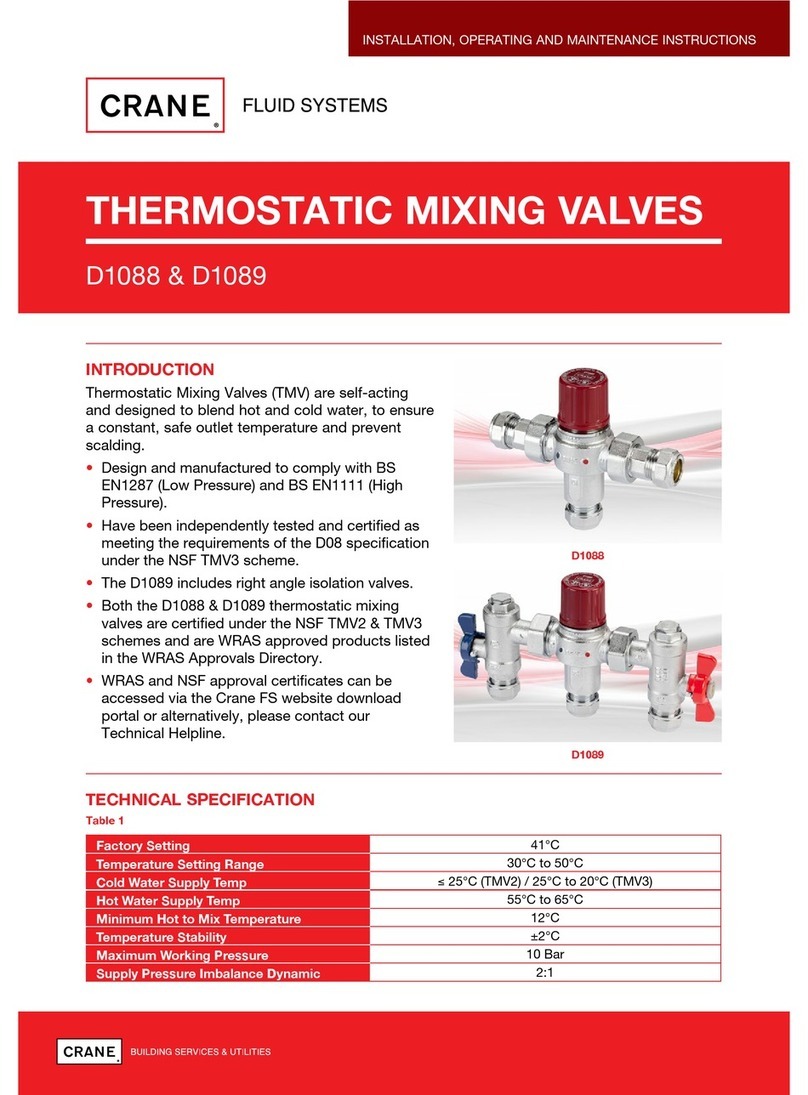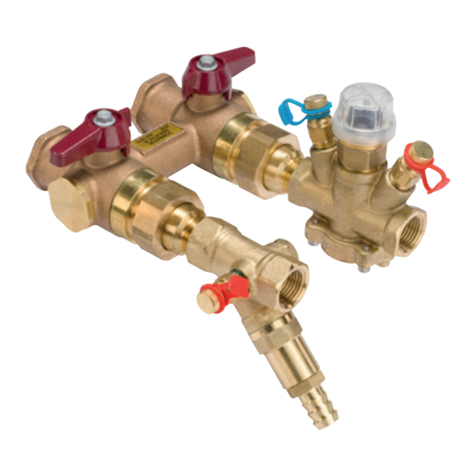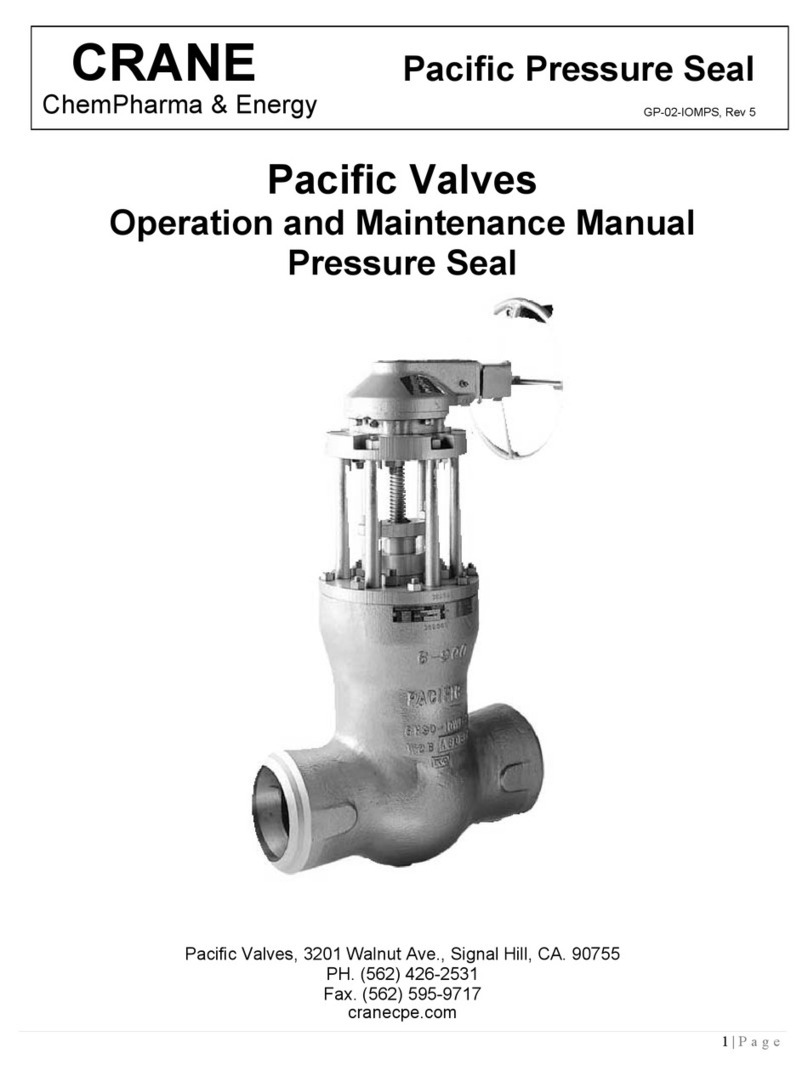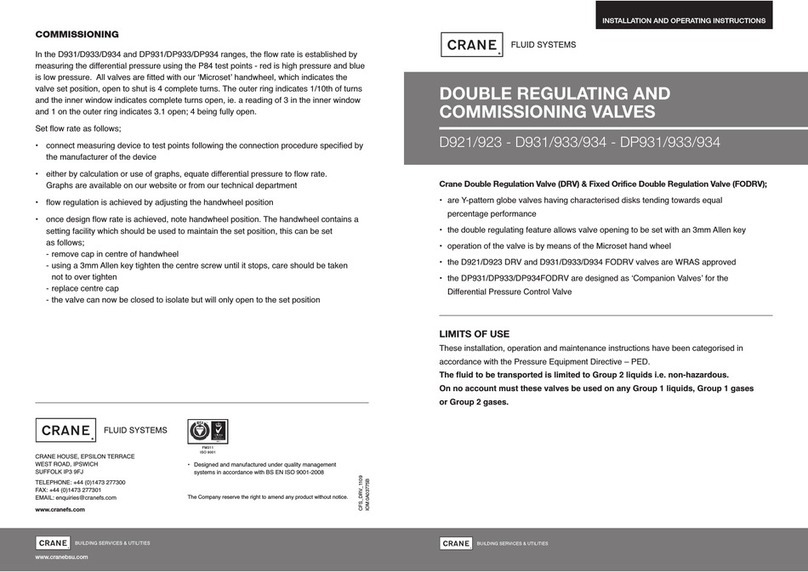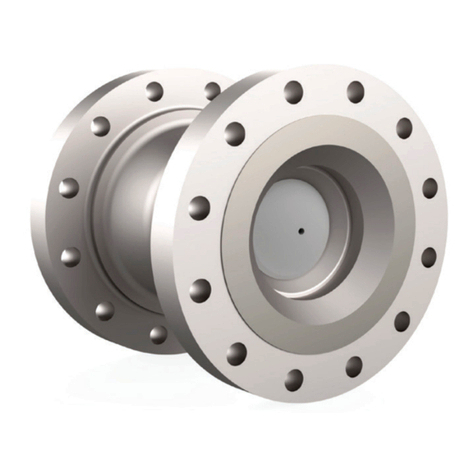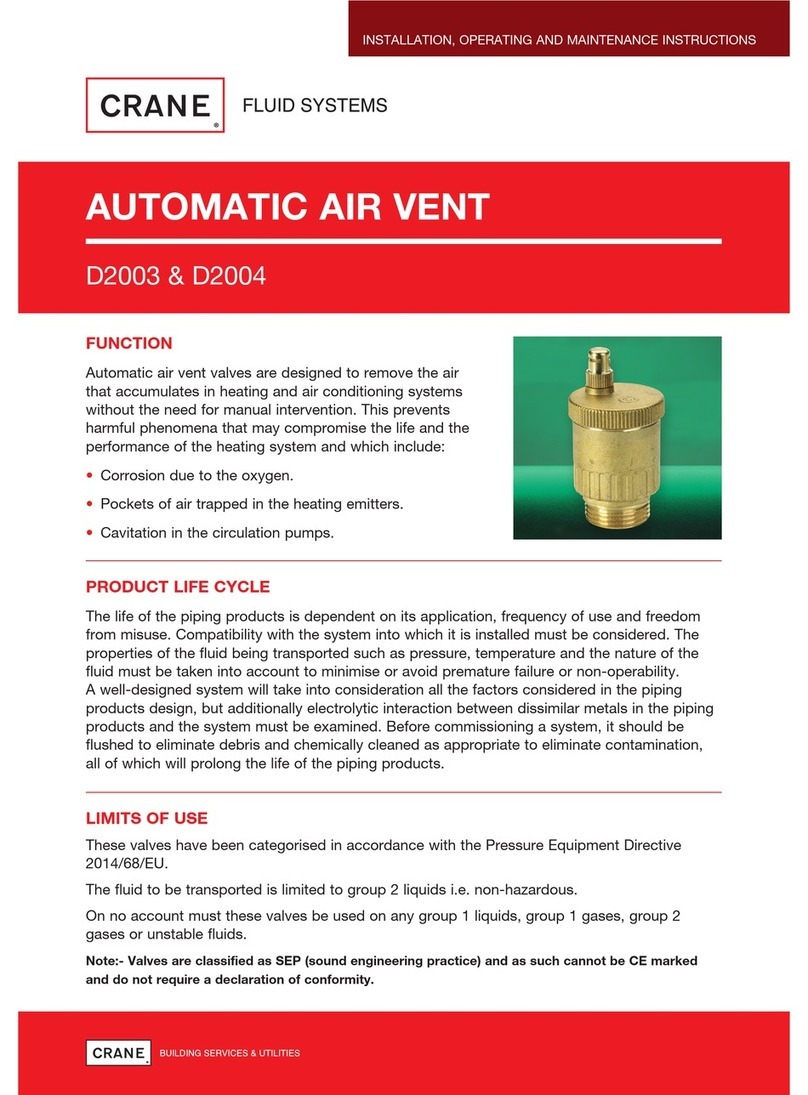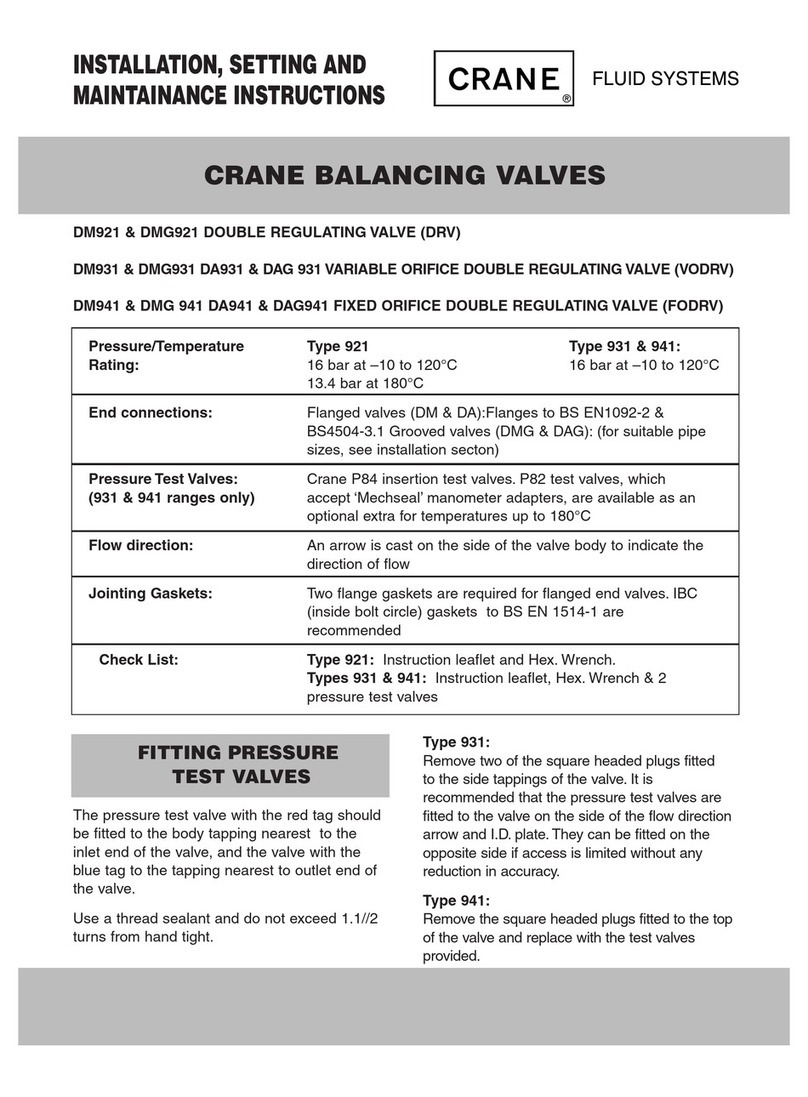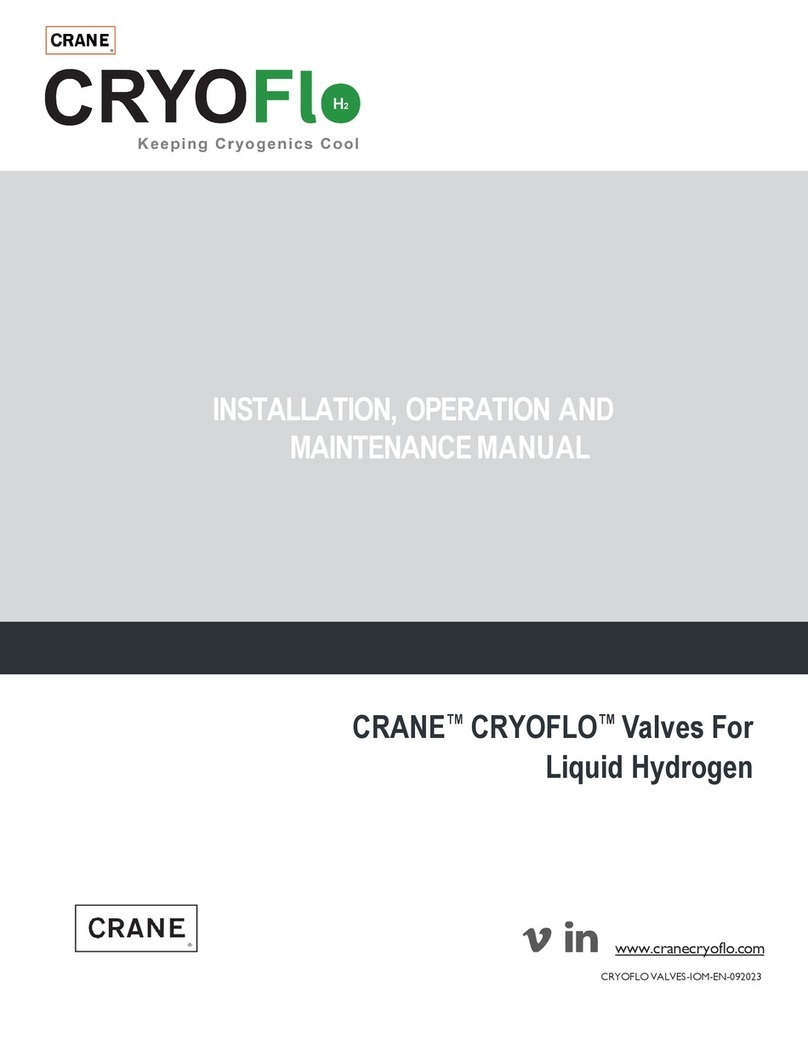
Tilting Disc Type Check Valves
Date:
prepared:
approved:
Page:
22.03.2005
C.Wied
H.Six
3 of 14
Operating instruction No.:
BUW-510/1-E
Danger
It must be ensured that the materials selected for the parts of the armature that
come into contact with the medium are suitable for the media used. KROMBACH
accepts no liability for damage which results from corrosion caused by aggressive
media.
Failure to observe this requirement can lead to danger to life and limb and
cause damage in the pipeline system.
⇒the pipeline system and the control system are correctly installed and regularly checked. The wall
thickness of the housing of the armature must be such that in such correctly installed pipeline
systems, an additional load Fzin the usual order of magnitude (Fz= ¶ /4 DN2PS) is taken into
account.
(PS = maximum permissible design pressure at room temperature)
⇒the armature and the drive (if ordered) are correctly connected to these systems.
⇒the activation time of the armature/drive unit is adapted to the parameters of the installation.
⇒the usual flow speeds analogously to EN593: 2002, Table 2 are not exceeded in continuous
operation in this pipeline system and that normal operating conditions such as vibrations, shocks,
erosion (e.g. due to wet steam), cavitations and more than an insignificant proportion of solid
material in the medium – particularly abrasive material – is clarified with KROMBACH.
⇒armatures which are operated at temperatures >50°C or <20°C, together with the pipeline
connections, must be protected against physical contact in order to protect the operator from
injury.
⇒installation, maintenance and operation are carried out only by properly qualified personnel (see:
DIN IEC 3/B/244/CDV).
3.3. Special hazards
Danger
to life
The valve has mounted a lever and weight. The pivoting range is necessarily
to be equipped with a protective grating.
Danger
to life
The valve shaft is sealed with a stuffing box. Before the nuts on the stuffing box
retainer are loosened or released, the pressure in the pipeline must be
completely normalised, so that no medium escapes from the stuffing box.
Danger
to life
Before releasing the bearing cover on the housing or before deinstalling the
armature from the pipeline, the pressure in the pipeline must be completely
normalised, so that the medium does not escape in an uncontrolled fashion from
the pipe. It must be ensured that the armature is open 5°-10° so that pressure
can be released on both sides of the armature. When it is necessary to deinstall
the drive, this may not be carried out until the armature has been opened for this
purpose and is left in the open position.
Danger
to life
When an armature must be deinstalled from a pipeline:
medium may escape from the pipe or from the armature. Where the medium is
hazardous to health or dangerous, the pipeline must be completely emptied
before the armature is deinstalled. Be careful with residues which subsequently
flow out of the dead spaces of the armature or out of the pipe or which
remain in the armature (under pressure).

